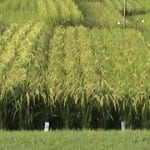 Sake, like much about Japan, is refreshingly simple at first. One need know so little to enjoy it almost immediately. But just below the surface, sake and everything about it become fascinatingly intricate and multifarious, yet also fraught with exceptions and vagueness. And so it is too with rice.
Sake, like much about Japan, is refreshingly simple at first. One need know so little to enjoy it almost immediately. But just below the surface, sake and everything about it become fascinatingly intricate and multifarious, yet also fraught with exceptions and vagueness. And so it is too with rice.
Sake is brewed from rice. Surely we all know that much. There are about 280 varieties of Japonica rice grown in Japan, and most premium sake is brewed from special sake rice (called shuzo-kouteki-mai) of which there are about 100 varieties. Each has its own characteristics; size, starch and protein content, solubility, and preferred climate can be different for each.
And yes, while different rice varieties lead to different flavors in the final sake, it is not as tight a connection as it might be for grapes-to-wine.
The biggest reason for that is that each master brewer can coax the rice to behave in a prescribed way, leading to totally different sake styles from the same rice. Nevertheless, if one tastes enough, it is indeed very possible to see threads of familiarity and style that run through sake made with the same rice.
The most popular and widely grown sake rice is called Yamada Nishiki. About fourth on the list is one called Omachi. Ah… Omachi.
Late last month I attended what is called the “Omachi Summit.” The fact that this event exists at all divulges much about the sake-and-rice industrial complex of Japan.
To short-circuit a potentially long-winded explanation, with but a couple of exceptions, brewers do not 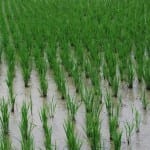 grow their own rice. It is instead grown by individual rice farmers (i.e. not business entities) and is distributed primarily but not exclusively through a network of agricultural co-ops for which we will use the general term “Zennoh.”
grow their own rice. It is instead grown by individual rice farmers (i.e. not business entities) and is distributed primarily but not exclusively through a network of agricultural co-ops for which we will use the general term “Zennoh.”
And Zennoh is a proper, structured organization with business objectives and a corresponding marketing arm. And the Okayama Prefecture branch of Zennoh is who is behind the Omachi Summit, with this year being the seventh running.
The Omachi Summit is a contest / tasting / party to assess and celebrate all the sake made using Omachi rice grown in Okayama. Note, the sake can be made elsewhere, but the rice has to be grown in Okayama to be a part of this gala affair. Omachi rice can be and often is grown outside of Okayama. But Okayama is its birthplace, and without a doubt the best source for premium Omachi rice.
A bit more about this vaunted rice variety: Omachi was originally discovered in 1866, in a village of the same name in the western part of Okayama Prefecture, where almost all Omachi is grown. It is, for what it is worth, the oldest pure (i.e. not a product of cross-breeding) rice variety in Japan, and was one of the three most widely grown varieties in Japan during the Meiji period (1868-1912). Back then it was also popular as a table rice.
But its suitability to brewing great sake soon became obviously apparent, and more and more brewers in western Japan began to use it. In fact, once upon a time, it was almost common sense that Omachi should be used when brewing top grade sake for contests and such. This was before the days of Yamada Nishiki, and other crossbreeds, of course.
However, it’s very long stalks made it hard to grow and harvest by machine, and so farmers stopped growing it. It wasn’t until the mid ’80s that anyone really began to grow it again – a side effect of what was known as the ginjo-boom. It has become so popular that now it is the fourth most widely grown sake rice in Japan.
As mentioned, Omachi itself is a pure rice strain, unlike most sake rice varieties. But it is found in the “family trees” of 60 percent of all sake rice grown today. How’s that for a stud of a rice!
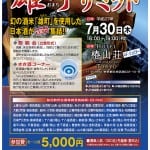 At the event, there were about 150 sake from about 100 kura spread across 31 of Japan’s 47 prefectures. Obviously there are more using Omachi, albeit grown outside of Okayama. They were tasted and scored by a panel of judges, after which we were free to taste and assess ourselves.
At the event, there were about 150 sake from about 100 kura spread across 31 of Japan’s 47 prefectures. Obviously there are more using Omachi, albeit grown outside of Okayama. They were tasted and scored by a panel of judges, after which we were free to taste and assess ourselves.
So, what does same made from Omachi taste like? In short, it is much more earthy and decidedly herbal than fruity and flowery. Aromas are in general less prominent than they might be with sake made with, say, Yamada Nishiki. The individual flavor components compete against each other in a healthy way, as opposed to blending harmoniously, as they might with Yamada Nishiki. I like the term “herbal, broad and striated” when describing the flavor profile of sake made using Omachi. While hardly an appetizing term, it does conjure the nature of sake made with Omachi, at least in my mind.
In his short speech, the tasting panel chairman explained how the judges were encouraged to look beyond aromas and avoid selecting sake based on alluring bouquets, instead assessing those flavor-driven facets that make Omachi-brewed sake special. Still, it seemed that most of the awarded sake on the tables had quite prominent aromatics. Yet there was also plenty of sake with all kinds of interesting things happening: spice, tartness, astringency, breadth and complexity. While some of these were in need of a bit of fine tuning, you could see where the brewers were trying to go. And you felt like encouraging them in that effort.
The event highlighted and reinforced many things about Omachi. It really is an awesome rice, and sake made using it can be character laden, extremely interesting and tasty to boot. And it is growing in popularity as well. More and more younger brewers are using it, so much so that there was not enough to go around this year. Surely Zennoh Okayama will do their best to alleviate that next year!
In the end, it all supported the truth that Omachi is a very interesting rice, and one well worth studying.
But then again, aren’t they all?
~~~~~~~~~~~~~~~~~~~~
Sake Professional Course in New York City, December 7 to 9
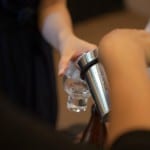 The next Sake Professional Course is scheduled for New York City, December 7 to 9. The venue is smaller than usual so that only 40 seats are available.
The next Sake Professional Course is scheduled for New York City, December 7 to 9. The venue is smaller than usual so that only 40 seats are available.
More information is available here, and testimonials from graduates can be perused here as well. The three-day course wraps 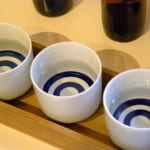 up with Sake Education Council supported testing for the Certified Sake Professional (CSP) certification. If you are interested in making a reservation, or if you have any questions not answered via the link above, by all means please feel free to contact me.
up with Sake Education Council supported testing for the Certified Sake Professional (CSP) certification. If you are interested in making a reservation, or if you have any questions not answered via the link above, by all means please feel free to contact me.
This will be the last Sake Professional Course this year (after all, it does take place in December!); the next one after that in the US will be next spring. If you are interested, feel free to send me an email to that purport now; I will keep track of your interest!




